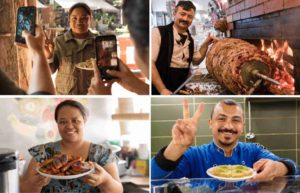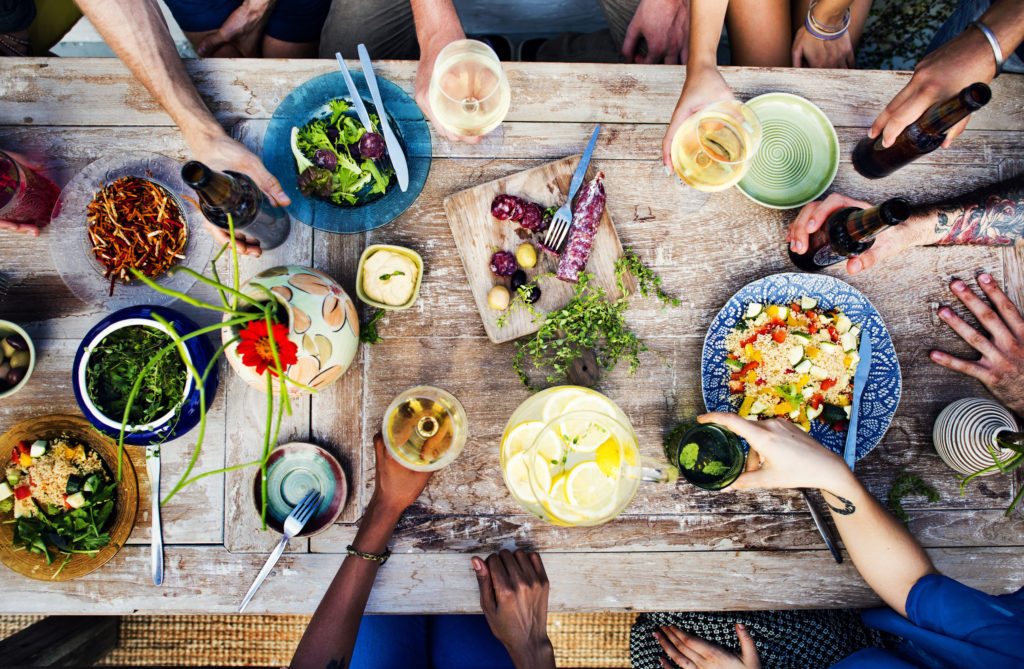Hello everyone,
I am Anıl Uzun and today we will continue to talk about Food Tourism.
When I saw the interest in food tourism, I said let’s continue from here, let’s go a little deeper.
Let’s take a look at the effects of food tourism in this blog post!
It is a certain fact that almost one hundred percent of the food-loving tourist eats while traveling. According to a 2005 study by the American Restaurant Federation, the most popular activity in a new destination is dining, and even higher-priced tables are much more likely to belong to tourists. According to this, people go out to dinner or can go out more than where they live.
This, of course, does not mean that this type of tourist spends all his time eating and drinking. It was also stated that there is a high correlation between the food-loving tourist and the tourists who are interested in historical and cultural places, and there is a parallelism between the amount tourists spend on food and the amount they spend on cultural activities.
Food and drink have the potential to contribute greatly to economic and social development due to their place in the tourism industry. The type of tourism built around food and drink supports the livelihoods of local agricultural producers while also helping to provide high quality food and drink. Empty restaurant tables are filled by tourists, increasing sales. More sales translates into more profit and investment. Food tourism is an important contribution to a sustainable society and economic development.
Effects of Food Tourism on Suppliers
The effects of food tourism on suppliers can be listed as follows;
– The food-loving tourist spends his money before returning home.
– As it is a seasonal type of tourism, the load on the infrastructure of the region is usually temporary and at a minimum level.
– If a destination’s popularity grows uncontrollably due to food tourism, it creates serious traffic jams on weekends, long queues at restaurants and unavoidably expensive room rates.
– Even though food tourism aims to directly benefit the consumer and the tourist, it also benefits local farmers due to the significant sale of tourist products.
– Food tourism, with its positive and negative aspects, feeds inter-regional and intra-regional competition.
– More sales means more profit, more investment.
– It enables cooperation and thus creates job opportunities that cannot be achieved individually (it creates a chance for small and local businesses to compete with the big ones).
– It provides the opportunity to adapt and participate in new niche markets and new trends.
– It helps to improve the quality of other accompanying business areas and services.
– It feeds additional business opportunities; such as cellar cabinet sales, wine labels, cargo business, and additional restaurants.
In September 2005, 59 restaurants founded by African-Americans in San Francisco, USA, established a cooperative. This cooperation attracts thousands of people to restaurants every month, thus providing employment for 500 people. This cooperative helps small businesses in the region with renovations, shows an example of neighborliness and supports the development of new job opportunities. More jobs, fewer empty people, less trouble on the streets. This is a permanent step towards sustainable economy and social development.
Effects of Food Tourism on Travel and Accommodation Industry

– Food tourism helps fill hotel rooms and restaurant tables (which would otherwise be empty).
– Reveals “hidden” business areas and creates new initiatives to market the destination.
– Takes advantage of the local/regional tourism trends that developed after 9/11.
– Promises a new, unexplored and large market with significant growth potential.
– Offers positive and distinguishable selling points for meeting, fair and tour operators.
Effects of Food Tourism on Local People
The effects of food tourism on local people can be listed as follows;
– Provides additional job opportunities, mostly in rural areas.
– Helps local people realize the economic impact of tourism.
– Develops intercultural awareness and understanding.
– Provides economic development.
– Increases tax revenues.
– Provides benefits to local neighbors with transit jobs and business surplus.
– It helps to unite communities with a lack of communication.
– It fosters additional business opportunities; such as creating support services.
The Effects of Food Tourism on Tourists
The effects of food tourism on tourists can be listed as follows;
– Provides access to products that cannot be found outside of the place where they are produced.
– Provides addiction and purchasing opportunities to select products.
– The tourist enjoys the competition and, accordingly, the consumption of higher quality and higher standard products (according to regions where food tourism is not developed).
– It creates new consumption trends.
Effects of Food Tourism on Producers and Exporters
The effects of food tourism on producers and exporters can be listed as follows;
– More sample products create more purchase and import demand.
– It creates more products that the tourist can take home from the region he visits.
– Creates more products to be proud of.
– Creates additional business opportunities: pantry cabinet sales, personalized wine labels, courier services, additional restaurants.
Effects of Food Tourism on Management
The effects of food tourism on management can be listed as follows;
– Depending on the increased sales, tax revenues also increase.
– Creates additional job opportunities.
– It creates tourism investments that do not need new infrastructure.
– It creates jobs and transit jobs that overflow into neighboring areas.
As you see, there are many interesting elements to talk about when it comes to food tourism.
My favourite kind of tourism.
Anıl Uzun
